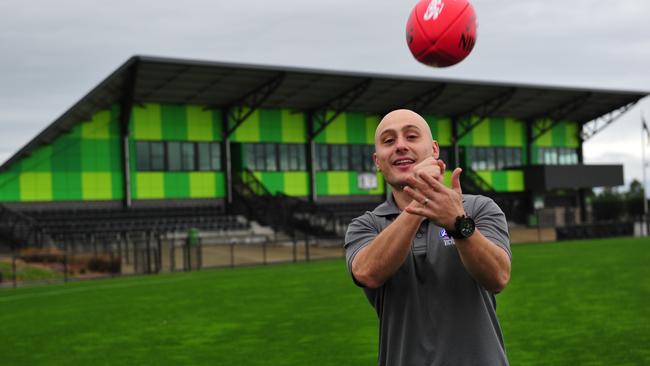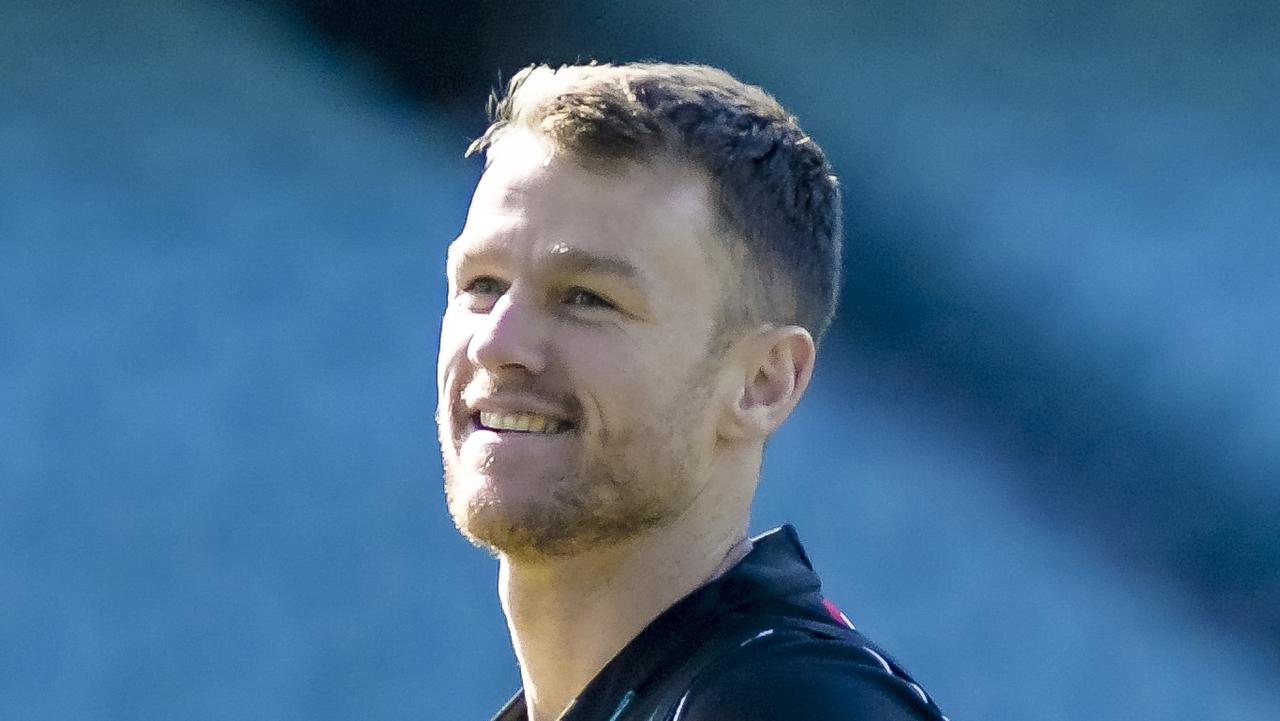AFL Victoria initiatives help grow football in Melbourne’s northwest suburbs
FEATURE: Football is growing as quickly as population numbers in Melbourne’s multicultural northwest.

North
Don't miss out on the headlines from North . Followed categories will be added to My News.
FROM a small office at Craigieburn’s Highgate Reserve, Len Villani oversees the future of football in Melbourne’s northwestern suburbs.
Villani does not need much office space because his role as AFL Victoria’s northwest region development manager can take him from Docklands to Broadford in a single day.
He deals with a diverse cross-section of the football community — from those learning the game for the first time to coaches and players wanting to broaden their understanding.
Villani’s patch covers Melbourne, Moreland, Moonee Valley, Sunbury, Brimbank and Hume where he manages programs for leagues, schools, clubs and community groups.
“It’s a very big geographic area and a traditional football area, particularly in the inner northwest,” he said.
“But that’s starting to change now, particularly in these developing areas such as Craigieburn. The demographic is a lot of new migrants, high population of Indian community and Islanders coming in and starting their families.”
The vast geographic area not only presents its challenges but also opportunities to introduce the game to children from countries where Australian Rules is an unknown.
The Gurdwara Indian Auskick Centre in Craigieburn and Banksia Gardens Auskick Centre in Broadmeadows are prime examples of the multicultural boundaries football pushes.
Both programs were introduced earlier this year, with AFL club Essendon backing the Auskick Centre at the Hume Highway temple.
Essendon multicultural development manager Salim Mahazi said that 67 children were enrolled when the centre launched its program.
“The football club recognised there’s an emerging Indian community in Craigieburn and their football participation was low,” Mahazi said.
“We looked at what was the reason for that and at grassroots level they probably don’t get encouraged or get the opportunity like most other people to join a football club.
“To bridge the gap, we thought rather than throw them into mainstream football straight away we’d create an Auskick ... that would grow and link them to local league football.”

Mahazi said some families’ understanding of football and its role in society had grown because of the initiative.
“These guys stayed, they supported the children, they got involved. We thought we’d encourage them to participate ... and to see that actually transition into a successful part of the program was another win for us,” he said.
The Bombers also run the Lil’ Hume Bombers Auskick group, which was introduced last year for indigenous children from Broadmeadows.
Banksia Gardens community development manager Jonothan Chee said its Auskick program had been embraced by children who had grown up loving soccer.
“In Broadmeadows, it’s very much the round-ball code that is favourite so it’s giving kids the opportunity to try something a bit different” Chee said.
He said the Auskick centre was an extension of other programs running at the community centre.
“We have an interesting cohort here,” Chee said. “We have young residents from the local housing estate, kids from refugee backgrounds, the local language school and a bunch of local residents. We have about 25 kids in the Auskick, it’s been steadily growing and getting a lot of kids from different backgrounds.”
Villani said AFL Victoria planned to link the Banksia Gardens Auskick with Essendon District Football League club Jacana to bolster its junior numbers. North Melbourne forward Majak Daw’s First Kick program, which helps migrants learn the basic skills of football, was another program promoting football in non-indigenous communities, Villani said.
“The nice part about it is it brings their families into it and that’s something I think that gets lost a lot,” he said, adding the Multicultural Schools program was another vital initiative.
“It looks at introducing multiculturally diverse students to the game of football in terms of the basic skills, understanding of the game and also important social messages as well, such as peace and harmony.”
Villani is realistic about the competition football faces in multicultural communities, with soccer clubs in the region offering an alternative pathway.
“We’re aware of that appeal and a lot of multicultural communities that are coming across probably find it a bit easier to transition because it’s a sport they know,” he said. “But once you get through that introduction, it’s amazing how quickly people fall in love with the game of footy.
“It’s just trying to find ways and means to break down those initial barriers in terms of a cultural thing, what the game’s about and the language of what the game’s about.”
Villani said junior basketball was another strong competitor to Australian Rules, but many children chose to play both sports.
The number of footballers in the northwest climbed from 22,200 to 26,300 between 2012 and 2013, with growth in women’s football, AFL 9’s and school football behind the increase.
AFL Victoria female development manager Chyloe Kurdas said a clear pathway from youth girls to senior football had helped make the sport more attractive.
“We’ve worked really hard on building the most comprehensive female high-performance pathway in the country,” Kurdas said.
“We currently have three youth girls academies based at TAC Cup clubs, Calder Cannons has one and at the end of the year we’ll have six. We’ll have 180 girls in a high-performance program. That wasn’t possible three years ago when we only had one academy.”
She said AFL Victoria had developed a strategic approach to youth girls’ football, introducing teams in regions across the state where demand was high.
The Northern and Western Region leagues and EDFL run Youth Girls competitions. Kurdas said the mooted development of a national women’s competition by 2020 had helped grow interest in female leagues.
The region Villani administers includes 47 Auskick centres, 3800 Auskick participants, 200 schools, 260 clubs and nine leagues.
He said more than 65 per cent of Auskick participants each year across the region were new, highlighting the increasing interest in Melbourne’s northwest.
“Over 65 per cent of our Auskick participants every year are new to the game so we’re getting a lot of kids in, a lot of kids interested and creating a whole heap of buzz,” Villani said.
“We’ve just got to make sure that translates to a lifelong participant in terms of getting them into junior footy in a good-quality environment where we can control it, make sure it’s fun and safe.”


